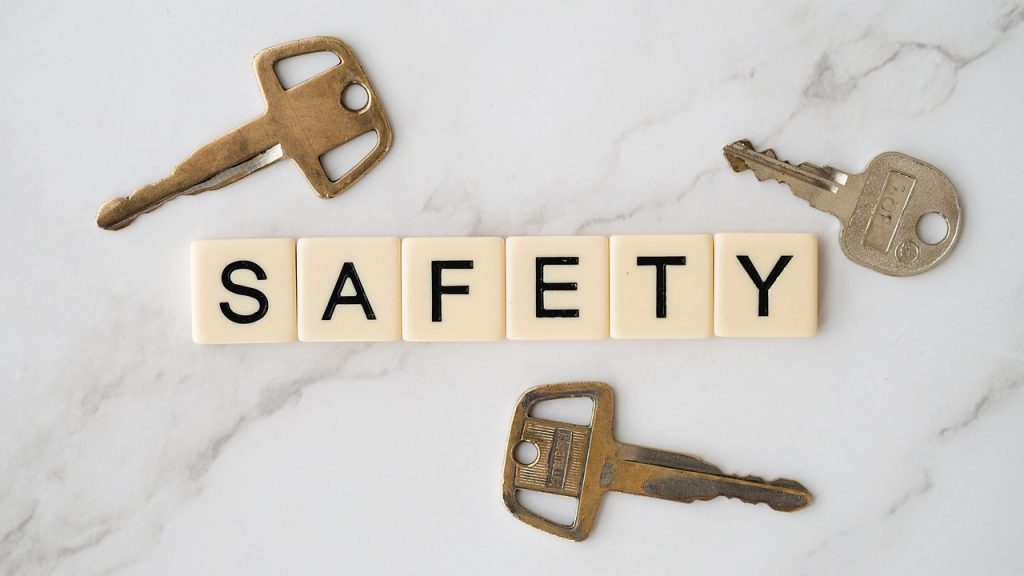The Importance of Safety in Custom Lanyards
Custom lanyards are widely used across various industries and settings, from corporate offices and schools to events and trade shows. While they serve as practical accessories for holding ID badges, keys, and access cards, safety and reliability are paramount when selecting custom lanyards. Poorly designed or low-quality lanyards can pose safety risks, such as choking hazards or failure under stress. This article provides ten essential tips for selecting safe and reliable custom lanyards, ensuring they meet your needs while prioritizing the well-being of users.
1. Prioritize High-Quality Materials
Choosing Durable and Safe Materials
The material of custom lanyards plays a crucial role in their safety and durability. High-quality materials ensure the lanyards can withstand regular use and stress without breaking or fraying.
Example: Polyester is a popular choice for custom lanyards due to its durability, flexibility, and resistance to stretching. It’s also less likely to cause skin irritation compared to some synthetic materials.
Considering Comfort and Skin Safety
Select materials that are comfortable to wear and safe for the skin, especially if the lanyards will be worn for extended periods. Soft, hypoallergenic materials reduce the risk of skin irritation.
Example: Cotton or bamboo lanyards are soft and breathable, making them suitable for individuals with sensitive skin or allergies.
2. Ensure the Lanyard’s Length is Appropriate
Optimal Length for Comfort and Safety
The length of the lanyard should be appropriate for the intended use. Lanyards that are too long can pose a tripping hazard, while those that are too short may be uncomfortable and restrictive.
Example: A standard lanyard length of around 36 inches is typically suitable for most adults, providing a comfortable and safe fit without hanging too low.
Adjustability Features
Consider lanyards with adjustable features, such as sliders or buckles, which allow users to customize the length to their preference. This feature enhances comfort and ensures a secure fit.
Example: An adjustable lanyard with a slider can accommodate different body types and preferences, making it versatile for various users.
3. Choose Secure and Reliable Attachments
Selecting Strong Attachments
The attachments used on custom lanyards, such as clips, hooks, or rings, should be strong and reliable. They must securely hold items without detaching or breaking under normal use.
Example: Metal swivel hooks are durable and provide a secure attachment for holding ID badges, keys, or access cards.
Quick-Release and Detachable Options
For added safety and convenience, consider lanyards with quick-release or detachable attachments. These features allow for easy removal of items without removing the entire lanyard.
Example: A lanyard with a detachable buckle allows the user to easily remove their ID badge for scanning or display without taking off the lanyard.
4. Incorporate Safety Breakaway Features
Importance of Breakaway Lanyards
Safety breakaway features are essential for preventing choking hazards. These lanyards are designed to break apart under pressure, reducing the risk of injury if the lanyard is caught or pulled.
Example: A breakaway lanyard can prevent accidents in environments where the lanyard might get caught in machinery or other equipment.
Types of Breakaway Mechanisms
Different breakaway mechanisms are available, including magnetic and snap-on designs. Choose the type that best suits your environment and safety requirements.
Example: A magnetic breakaway clasp can easily separate under pressure and reattach without damaging the lanyard, offering a safe and reusable option.
5. Consider the Lanyard’s Width and Strength
Choosing the Right Width
The width of the lanyard affects both its durability and comfort. Wider lanyards can distribute weight more evenly and are generally more durable, while narrower lanyards may be more comfortable for lightweight items.
Example: A 3/4-inch wide lanyard provides a good balance between comfort and durability, making it suitable for everyday use.
Testing for Strength and Load Capacity
Ensure the lanyard can support the weight of the items it will hold without stretching or breaking. Test the lanyard’s strength and load capacity, especially if it will carry heavy items.
Example: For holding keys or multiple access cards, a lanyard should be tested to ensure it can support the weight without compromising safety.
6. Opt for Non-Toxic and Eco-Friendly Materials
Avoiding Harmful Chemicals
Select lanyards made from non-toxic materials, free from harmful chemicals like BPA or phthalates. This consideration is particularly important for lanyards used in environments with children or sensitive populations.
Example: BPA-free plastic clips are a safer choice for custom lanyards used in schools or healthcare settings.
Eco-Friendly Material Options
Consider eco-friendly materials, such as recycled PET or organic cotton, for a more sustainable choice. These materials not only reduce environmental impact but also appeal to eco-conscious users.
Example: A lanyard made from recycled plastic bottles promotes environmental responsibility and aligns with corporate sustainability initiatives.
7. Ensure Customization is Safe and Durable
Safe Printing and Dyeing Methods
Ensure that the customization process, including printing and dyeing, uses safe methods and materials. Avoid harsh chemicals that can cause skin irritation or degrade the quality of the lanyard.
Example: Water-based inks are a safe and environmentally friendly option for printing custom designs on lanyards.
Durability of Customization
The custom design should be durable and resistant to fading, peeling, or cracking. High-quality customization ensures that the branding and information remain visible and professional.
Example: Sublimation printing offers vibrant colors and long-lasting designs that are resistant to wear and tear, making it an excellent choice for custom lanyards.
8. Evaluate Supplier Reputation and Certifications
Choosing a Reputable Supplier
Select a reputable supplier with a proven track record of producing high-quality and safe custom lanyards. Research customer reviews and ask for samples to assess the quality.
Example: A supplier with positive reviews and testimonials from reputable organizations is more likely to provide safe and reliable custom lanyards.
Certifications and Compliance
Ensure the supplier complies with relevant safety and quality standards. Certifications, such as ISO or compliance with regulations like REACH, indicate a commitment to quality and safety.
Example: A supplier with ISO 9001 certification demonstrates a commitment to maintaining high standards in quality management and safety.
9. Plan for Safe Use and Distribution
Educating Users on Safe Use
Educate users on the safe use of custom lanyards, including proper wearing and handling. Provide guidelines to prevent misuse, such as wrapping the lanyard around the neck or attaching too many heavy items.
Example: An organization might include a safety card with instructions on how to safely wear and use the custom lanyard, emphasizing the importance of not attaching excessive weight.
Proper Storage and Maintenance
Proper storage and maintenance can extend the lifespan of custom lanyards and maintain their safety. Store lanyards in a dry, cool place, and clean them regularly according to the material’s care instructions.
Example: Nylon lanyards can be wiped clean with a damp cloth, while cotton lanyards may be machine washable, depending on the design and attachments.
10. Consider Special Needs and Environments
Accommodating Special Needs
Consider the specific needs of users, such as individuals with allergies, disabilities, or other special requirements. Choose materials and designs that accommodate these needs and ensure safety.
Example: Hypoallergenic materials are suitable for users with sensitive skin, while adjustable lanyards can accommodate wheelchair users or individuals with limited mobility.
Adaptability for Different Environments
Custom lanyards may be used in various environments, from office settings to outdoor events. Choose designs and features that are adaptable and safe for different conditions, such as water-resistant materials for outdoor use.
Example: A water-resistant lanyard is ideal for outdoor events, protecting the lanyard and attached items from moisture and ensuring durability.
Prioritizing Safety and Reliability in Custom Lanyards
Selecting safe and reliable custom lanyards is essential for protecting the well-being of users and ensuring the effectiveness of the lanyards in various settings. By considering factors such as material quality, attachment security, breakaway features, and customization safety, organizations can provide lanyards that are not only functional and aesthetically pleasing but also safe for everyday use.
Custom lanyards are more than just accessories; they are valuable branding tools that represent your organization. Prioritizing safety and reliability in their selection and design reflects a commitment to quality and care for the users. Whether used in corporate offices, schools, events, or other environments, well-designed custom lanyards can enhance brand presence, promote safety, and provide a positive user experience.
As you select custom lanyards for your organization, remember that the key to success lies in thoughtful design, quality materials, and a focus on user safety. With the right approach, custom lanyards can become an integral part of your branding strategy, providing both practical benefits and a safe, reliable accessory for all users.
If you are interested in purchasing custom lanyards or if you have any questions feel free to call us at 866-486-3435 or fill out a FREE quote form.





